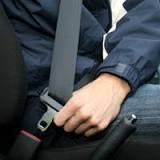motorcycle helmet law 1973

Alarmed by substantial increase of road accidents in the country, alliance of Civil Society Organisations (CSOs) has called for speedy review of traffic laws and greater enforcement of the Road Traffic Act of 1973 to keep up with the modern changes. Forming at least 18 NGOs, the alliance's representatives met yesterday in Dar es Salaam and resolved to press the government make quick amendments in the traffic laws for the situation to be tamed. The non-governmental organisations mostly working on promoting rights of women and children said the rate of road accidents is now becoming outrageous, and alarming amidst continued massive awareness campaigns by CSOs and other international organisations. "The law, despite recognising use of seatbelts for a driver and his passenger seated close to him on the front seat, is equally silent on other passengers seating on the back seats, more importantly children," Tamwa Executive Director Ms Edda Sanga said in a joint statement.

"Surface and Marine Transport Regulatory Authority-SUMATRA regulations are also clear on this, but the law isn't specific," she said. World Health Organisation statistics say if an accident occurs a passenger tied to a seatbelt is likely to reduce the magnitude of his/her the causality by 50 and 70 per cent in the front and back seats respectively. The alliance hinted that the same law is also not specific on the design and type of helmet to be worn by a motorcycle rider, though Dar es Salaam city council regulations specifically impose requirements for a passenger and rider to put on helmets "What type of helmet, how best should one wear?" the alliance questioned ahead of the World Remembrance Day for road accidents' victims. In Tanzania, where 76 percent of road accidents occur as a result of reckless driving, the law allows motorist to drive only if alcohol content in their bloodstream does not exceed 0.08percent. The international standards require drivers drunk not to test more than 0.05 percent especially for the experienced ones and 0.02 percent for beginners.

Tawla Programme Director Ms Nasoeku Kisambu said most of the re-occurring road accidents in the country can be prevented. "Unfortunately, most of those affected by road accidents are not recognised for support, but there must be service provision to their injuries," she pointed out as she was being seconded on the note by Tanganyika Law Society Lawyer Ms Mabhezya Rehani and TCRF representative Mr Jons John. The representatives said the group that is most affected by road accidents are people aged between 15-29. TLS lawyer Ms Rehani said the society has now trained legal aid providers across the country to help road accident victims to have access to the law and demand their legal rights, adding that most of the victims fail to claim their basic rights in law after accidents, because their families would be subjected to abject poverty on bereavements. She gave a case study of a resident of Kibaha, Ms Christina Thomas, who is now struggling to take care of her family of three children following the death of her husband, who died on duty while driving a commercial vehicle.

"We have not been compensated or paid any amount from his company, yet the kids are in school and they require care and I am simply a housewife," she said.Statutory Instruments1998 No. 1807ROAD TRAFFICThe Motor Cycles (Protective Helmets) Regulations 1998Made22nd July 1998Laid before Parliament30th July 1998Coming into force21st August 1998The Secretary of State for the Environment, Transport and the Regions, in exercise of the powers conferred by sections 16 and 17 of the Road Traffic Act 1988(1), and after consultation with representative organisations in accordance with the provisions of section 195(2) of that Act
motorcycle dealers near lansdale pa, hereby makes the following Regulations:— 1.
motorcycle for sale burnleyThese Regulations may be cited as the Motor Cycles (Protective Helmets) Regulations 1998 and shall come into force on 21st August 1998.
givi motorcycle top box india
2. The Regulations specified in Schedule 1 to these Regulations are hereby revoked. (a)“EEA State” means a State which is a contracting party to the Agreement on the European Economic Area signed at Oporto on 2nd May 1992 as adjusted by the Protocol signed at Brussels on 17th March 1993(2);
motorcycle parts texarkana(b)a reference to a numbered regulation is a reference to the regulation so numbered in these Regulations;
harley for sale in sulitand (c)a reference to a numbered paragraph is a reference to the paragraph so numbered in the regulation in which the reference occurs.
used bikes for sale in bellary4.—(1) Save as provided in paragraph (2), every person driving or riding (otherwise than in a side-car) on a motor bicycle when on a road shall wear protective headgear.

(2) Nothing in paragraph (1) shall apply to any person driving or riding on a motor bicycle if— (a)it is a mowing machine; or (b)it is for the time being propelled by a person on foot. “motor bicycle” means a two-wheeled motor cycle, whether or not having a side-car attached, and for the purposes of this definition where the distance measured between the centre of the area of contact with the road surface of any two wheels of a motor cycle is less than 460 millimetres, those wheels shall be counted as one wheel; “protective headgear” means a helmet which— either— bears a marking applied by its manufacturer indicating compliance with the specifications contained in one of the British Standards (whether or not as modified by any amendment) mentioned in Schedule 2 to these Regulations; or is of a type manufactured for use by persons on motor cycles which by virtue of its shape, material and construction could reasonably be expected to afford to the wearer a degree of protection from accidental injury similar to or greater than that provided by a helmet of a type prescribed by regulation 5;

if worn with a chin cup attached to or held in position by a strap, is provided with an additional strap (to be fastened under the wearer’s jaw) for securing the helmet to the head; and is securely fastened to the head by means of straps provided for that purpose; and “strap” includes any fastening device. 5.—(1) The types of helmet hereby prescribed as types of helmet recommended as affording protection to persons on or in motor cycles from injury in the event of an accident are helmets which as regards their shape, construction and other qualities conform— (a)with British Standard 6658:1985 as amended by Amendment Slip number 1 published on 28th February 1986 and are marked with the number of that standard, or (b)with any other standard accepted by an EEA State which offers in use equivalent levels of safety, suitability and fitness for purpose and are marked with a mark to indicate that standard, and in either case are marked with an approved certification mark of an approved body (whether or not they are required to be so marked by the standard in point).

(2) For the purposes of this regulation— (a)an approved certification mark is— (i)the certification mark of the British Standards Institution; or (ii)a certification mark which indicates that a conformity assessment equivalent to that of the British Standards Institution has been undertaken, and (i)the British Standards Institution; or (ii)any body approved by an EEA State to undertake conformity assessments equivalent to those undertaken by the British Standards Institution. 6. Nothing in regulation 5(1) shall be taken to authorise any person to apply any number or mark referred to therein in contravention of the Trade Descriptions Act 1968(3) or the Consumer Protection Act 1987(4). Signed by authority of the Secretary of State for the Environment, Transport and the Regions Helene HaymanParliamentary Under Secretary of State,Department of the Environment, Transport and the Regions22nd July 1998 (1)(2)Orders revokedReferencesThe Motor Cycles (Protective Helmets) Regulations 1980S.I. 1980/1279The Motor Cycles (Protective Helmets) (Amendment) Regulations 1981S.I. 1981/374The Motor Cycles (Protective Helmets) (Amendment) Regulations 1986S.I. 1986/4721.

British Standard 2001:1956 as amended by the following Amendment Slips— NumberDate of Publication111th January 1957223rd November 1959327th February 1962411th June 1964513th March 1968618th February 19722. British Standard 1869:1960 as amended by the following Amendment Slips— NumberDate of Publication129th May 196343rd December 1965513th March 1968610th August 197173rd January 1972815th May 197391st February 1974102nd September 1974111st March 19753. British Standard 2495:1960 as amended by the following Amendment Slips— NumberDate of Publication129th May 1963222nd February 196537th December 1965422nd July 1966510th August 197163rd January 197271st February 197481st March 19754. British Standard 2001:1972 as amended by the following Amendment Slips— NumberDate of Publication112th December 1972226th January 197331st February 197442nd September 197451st March 19757. British Standard 5361:1976 as amended by the following Amendment Slips— NumberDate of Publication130th September 1977231st August 1978331st August 1979429th February 19808.

British Standard 2495:1977 as amended by the following Amendment Slips— NumberDate of Publication130th September 1977231st August 1978331st August 1979429th February 19809. British Standard 5361:1976 as amended by the following Amendment Slips— NumberDate of Publication130th September 1977231st August 1978331st August 1979429th February 1980527th February 198110. British Standard 2495:1977 as amended by the following Amendment Slips— NumberDate of Publication130th September 1977231st August 1978331st August 1979429th February 1980527th February 198111. British Standard 6658:1985 as amended by the following Amendment Slip— NumberDate of Publication128th February 1986(This note is not part of the Regulations) These Regulations revoke and consolidate with amendments the Motor Cycles (Protective Helmets) Regulations 1980 and their amending instruments (the “1980 Regulations”). The 1980 Regulations prescribed certain types of helmet recommended as affording protection to persons on or in motor cycles from injury in the event of accident.

The types of helmet were prescribed by reference to conformity with certain British Standards and by appropriate markings. These Regulations require every person driving or riding (otherwise than in a side-car) on a motor cycle on a road to wear protective headgear as defined in regulation 4. This requirement does not extend to a mowing machine, or vehicle being propelled by persons on foot (regulation 4(2)). Nor does it extend, by virtue of section 16(2) of the Road Traffic Act 1988, to a follower of the Sikh religion while he is wearing a turban. Regulation 5 prescribes certain types of helmet recommended as affording protection to persons on or in motor cycles from injury in the event of an accident. The types of helmet are so prescribed by reference to British Standard 6658:1985 as amended or any other standard accepted by a European Economic Area (“EEA”) State which offers in use equivalent levels of safety, suitability and fitness for purpose. In each case the helmet must be marked with the relevant standard with which it conforms and an approved certification mark of an approved body.